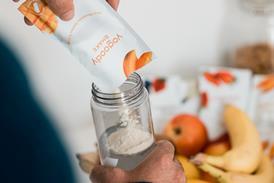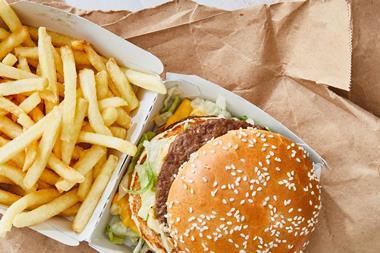
It’s official – we’ve become a nation of snackers. The biggest in Europe, in fact. In recent years the snacking market has boomed, with 66% of adults snacking at least once a day [Mintel Consumer Snacking UK: March 2019] and an incredible 37% of 25 to 34-year-olds saying they snack instead of having a proper meal at least once a week.
However, we’ve also seen a real shift in the types of snacks consumers are looking for, with an explosion of healthy alternatives being launched. Kale chips, rice cakes, protein bars, energy balls and chicken bites are all making their way on to the shopping lists of increasingly health-conscious consumers.
What’s more, with snacking on the rise and the traditional notion of ‘three meals a day’ becoming less popular, based on lifestyles evolving (busy, unpredictable and often unstructured working patterns) consumers are not just considering the nutritional value of their snacks – but are actively looking at snacks as a way to boost nutrition. Forty-four per cent of adults see snacks as a good way to boost their nutritional intake – and with only half of Brits eating their recommended five portions of fruit & vegetables a day, healthy snacks play a vital role in helping the nation make healthier choices. When you also consider the country’s growing obesity crisis and recent talks of a ‘snack tax’ to help combat this, some have said retailers have a responsibility to help shoppers consume healthier options. That may be the case, but this should be seen as an opportunity, not another obstacle to overcome.
The demand is clearly there. For decades, consumers have largely seen snacks as being crisps, chocolate, sweets and biscuits. Food that arguably brings empty calories and delivers limited real nutritional value. But the tide is changing. Today’s consumer is looking to make better, healthier choices and increasingly obtain their nutrition from snacks. Search data backs this up. There has been a 32% increase in people searching online for ‘high-protein snacks’ in the past year.
The advent of chilled snacking is bringing a whole new dimension, and therefore opportunity, to the industry. Consumers are looking to the likes of chicken snacks and cheese and nut combinations to get the right nutritional intake. Chilled snacks are allowing people to get the nutrition they require in a world where the three stalwarts of breakfast, lunch and dinner are now often not the norm.
And it’s not just the back of store that is feeling the impact of the snack evolution. It’s being felt across a number of snacking missions. Take the classic front-of-store ‘meal deal’. This creates a great platform to provide shoppers with a wider choice of healthy snacking options. Crisps and chocolate are not going to become obsolete any time soon, but retailers can now give a much broader array of options of what could accompany and nutritionally complement the classic lunchtime sandwich or salad.
It’s true that, with such an influx of new, healthy snacks available to satisfy demand, the fixture can be overwhelming for shoppers and consumers to navigate. It’s therefore important to guide shoppers on where these healthy snacks can be found and what nutritional advantages they deliver. Signposting these different food groups, both in the front and back of store, and providing recommendations on how consumers can mix and match items to ensure they’re getting a balanced intake of nutrients is something all retailers should be actively considering. There’s also a role for retailers and brands to help inform and educate shoppers on the food they’re putting into their basket, so they can make the most of their snacking moments and make smarter, more mindful and nutritional snacking choices.



















No comments yet